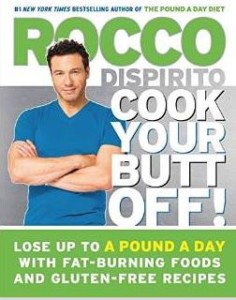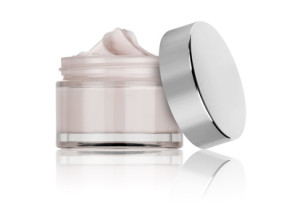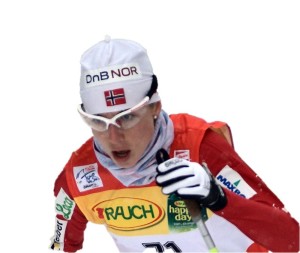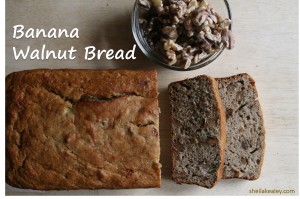This week, read about Monkeys, Myths, and Molecules, why you can’t cook your butt off, how training can be odd, late-night snacking, why you’ll race again – even though it hurts, the pseudoscience of beauty products, hula hoops, & more.
Monkeys, Myths, and Molecules
Wondering how to decide if health and nutrition information is reliable? It is becoming harder to do with the amount of misinformation on the internet, celebrities selling health and diet books, self-proclaimed nutrition experts, and even people with credentials spreading misinformation. In his new book, “Monkeys, Myths, and Molecules” McGill’s Joe Schwarcz will help debunk popular myths using a scientific approach.
This week, he talked about his book on CBC The Current, and explains the title in the video below. If you’re in Ottawa, he will be speaking at Ashbury College May 19.
“Cook Your Butt Off” celebrity cookbook with nutrition advice to avoid
Speaking of misleading nutrition and health advice, you’ll find plenty of it in ‘Cook Your Butt Off!’ with Chef Rocco DiSpirito, featured of all places on the New York Times health pages. The book boasts the following:
- lose up to a pound a day (dangerous and doesn’t lead to sustainable changes)
- fat-burning foods (don’t exist)
- gluten-free recipes (because they help you lose weight?) They don’t
- recipes designed to burn more calories than they contain! Sorry.
 In the New York Times video chef DiSpirito explains that we shouldn’t use kitchen appliances and do cooking tasks by hand as a form of exercise to burn more calories (he claims this can burn up to 400 calories an hour – doubtful – unless you’re somehow running around or doing exercises at the same time). I’m all for saving energy, noise, and doing some things by hand, but this doesn’t make sense in terms of diet or nutrition advice. In fact, the reason most people don’t cook is because they don’t have enough time – so it would make more sense to encourage time-saving devices. Also, although health experts are unanimous in encouraging exercise for better health, when it comes to using exercise to burn calories that leads to weight loss there is some debate. It’s disappointing that the New York Times Health Section is promoting such a book.
In the New York Times video chef DiSpirito explains that we shouldn’t use kitchen appliances and do cooking tasks by hand as a form of exercise to burn more calories (he claims this can burn up to 400 calories an hour – doubtful – unless you’re somehow running around or doing exercises at the same time). I’m all for saving energy, noise, and doing some things by hand, but this doesn’t make sense in terms of diet or nutrition advice. In fact, the reason most people don’t cook is because they don’t have enough time – so it would make more sense to encourage time-saving devices. Also, although health experts are unanimous in encouraging exercise for better health, when it comes to using exercise to burn calories that leads to weight loss there is some debate. It’s disappointing that the New York Times Health Section is promoting such a book.
Other Links of Interest this Week
Training can be odd! Athletes have a tendency to complete only an even number of intervals in training sessions. Coach David Lowes looks at the implications. (Athletics Weekly)
Study sheds light on why we succumb to late-night snacking. The brain responds to foods differently at different times of day. At night, food might not be as rewarding or satisfying, so we eat more of it. (Brain Imaging and Behavior, March 2015)
 The pseudoscience of beauty products. Tim Caulfield, professor at the Faculty of Law and School of Public Health, University of Alberta, examines the dubious claims proclaimed by skin-care products. Acting as a guinea pig, he tests the products out on himself, and in looking at the evidence, finds there’s limited or no science to back up most claims. The article is adapted from his book, Is Gwyneth Paltrow Wrong About Everything? (The Atlantic)
The pseudoscience of beauty products. Tim Caulfield, professor at the Faculty of Law and School of Public Health, University of Alberta, examines the dubious claims proclaimed by skin-care products. Acting as a guinea pig, he tests the products out on himself, and in looking at the evidence, finds there’s limited or no science to back up most claims. The article is adapted from his book, Is Gwyneth Paltrow Wrong About Everything? (The Atlantic)
 Why you’ll race again, even though it hurts. Apparently, we aren’t very good at remembering the pain associated with exercise (that’s probably a good thing!). Brad Stulberg looks at the disconnect between how painful an event actually was, and how we remember it. He looks at recent research on how runners remembered the pain associated with running a marathon, and the work of behavioral economist Daniel Kahneman. (Brad Stulberg, Outside)
Why you’ll race again, even though it hurts. Apparently, we aren’t very good at remembering the pain associated with exercise (that’s probably a good thing!). Brad Stulberg looks at the disconnect between how painful an event actually was, and how we remember it. He looks at recent research on how runners remembered the pain associated with running a marathon, and the work of behavioral economist Daniel Kahneman. (Brad Stulberg, Outside)
How Can We Count Calories if Calories Are All Wrong? Keeping track of food intake is one of the most powerful methods to change your diet. New research is showing that some estimates of calories may be inaccurate, and better estimates would need to account for how your digestive system deals with the food. For example, one study showed that almonds have 25% fewer calories than standard estimates. The folks at Fooducate have good advice: “this shouldn’t discourage you from tracking your food intake. The very act of jotting down everything you consume will make you more accountable. Furthermore, if you eat a varied diet, many of the inaccuracies will cancel each other out.” (Fooducate)
Do carotenoids lower breast cancer risk? Here is a nice summary of the research behind the headlines. You’ll find caretonoids in brightly coloured red, green, and orange fruits and vegetables. I was involved in some of the early research on carotenoids and breast cancer, and it’s been interesting to watch the research evolve (Karen Collins, reporting on Am J Clinical Nutrition April 2015).
 How to make hula hoops for an active birthday party. This looks like fun, and a great idea for a birthday party! It seems pretty inexpensive and easy to produce sturdy hula hoops.(Active for Life).
How to make hula hoops for an active birthday party. This looks like fun, and a great idea for a birthday party! It seems pretty inexpensive and easy to produce sturdy hula hoops.(Active for Life).
Also, consider making one for yourself. Hula hoops are a fun way to get some aerobic exercise, and work on core strength and coordination. This small study shows that hula hooping can be an effective workout! Women followed a 30-minute hooping video and researchers found that exertion was comparable to traditional fitness classes like step aerobics or cardio kickboxing. Like the jump rope, you don’t need fancy equipment to get some exercise!
New Recipe: Banana Walnut Bread
 You know those healthy looking banana breads you see at coffee shops? Well, they aren’t that healthy. At about 420 calories a slice, featuring plenty of sugar and refined flour, you might as well call them cake. You can do better.
You know those healthy looking banana breads you see at coffee shops? Well, they aren’t that healthy. At about 420 calories a slice, featuring plenty of sugar and refined flour, you might as well call them cake. You can do better.
Here’s a loaf that’s just as tasty, easy to make, and much more nutritious. As with most of my recipes, I’ve tinkered with the ingredients to maximize the amount of healthful foods while maintaining a great flavour and texture. In this case, the bananas provide much of the rich taste and moistness, allowing me to reduce the fat and sugar, which provide calories without protective nutrients. Whole wheat flour subs in for the traditional refined white flour, providing more fiber and nutrients. The walnuts add a nice crunch, flavour, and healthy fats. Best of all, it’s a great tasting loaf.
Share This: